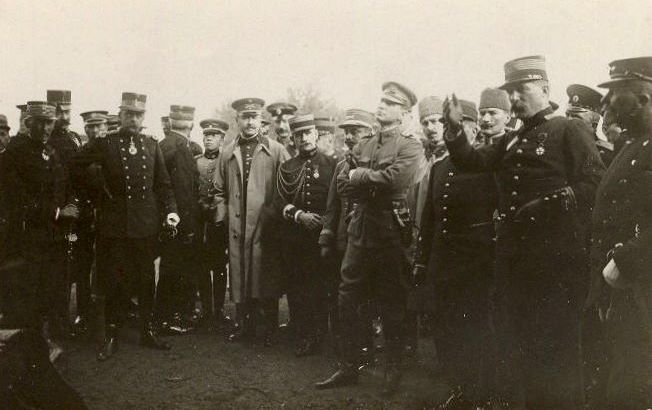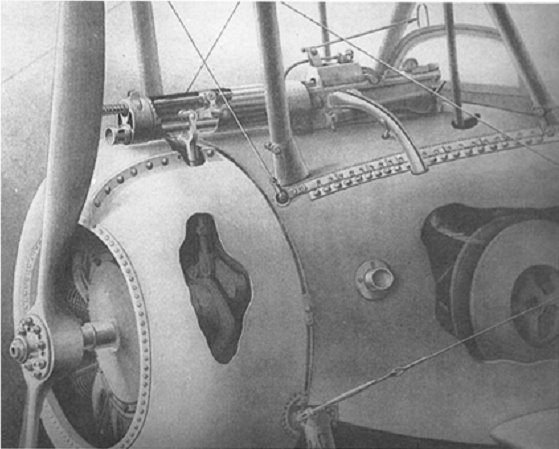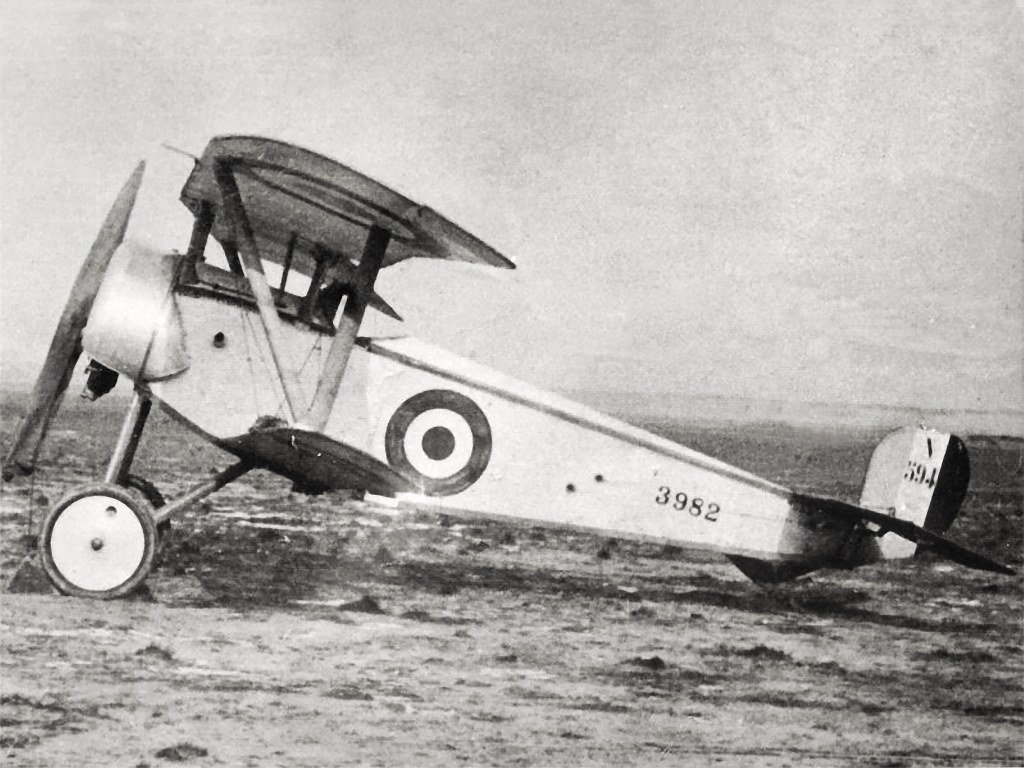|
Georges Thenault
Lieutenant Colonel Georges Thenault () (15 December 1887 – 19 December 1948) was the commander of the Lafayette Escadrille – the famed branch of the French air force in World War I composed of American volunteer pilots. The Lafayette Escadrille was created before the United States gave up its neutrality and joined France and Britain in the war against Germany. Once the United States formally entered the war, the Lafayette Escadrille was absorbed into the U.S. Army. Early life Born on 2 October 1887, in the small town of Celle-Lévescault, France (located on main highway between La Rochelle and Tours). World War I Standing 5-ft, 8-in, he was a giant in the eyes of his fellow Frenchmen and a respected leader amongst the American volunteer pilots. Identified as N.124, the ''Lafayette Escadrille'' was assigned to ''Groupe de Combat 13'' under the overall command of Commandant Philippe Féquant. During 1916–1917, this ''Groupe de Combat 13'' took part in such engagements ... [...More Info...] [...Related Items...] OR: [Wikipedia] [Google] [Baidu] |
Celle-Lévescault
Celle-Lévescault () is a commune in the Vienne department Department may refer to: * Departmentalization, division of a larger organization into parts with specific responsibility Government and military *Department (administrative division), a geographical and administrative division within a country, ... in the Nouvelle-Aquitaine region in western France. See also * Communes of the Vienne department References Communes of Vienne {{Vienne-geo-stub ... [...More Info...] [...Related Items...] OR: [Wikipedia] [Google] [Baidu] |
Auguste Edouard Hirschauer
André Auguste Édouard Hirschauer (16 June 1857 in Saint-Avold, Moselle, France – 27 December 1943 in Versailles, Yvelines, France) was a French lieutenant general in the First World War and from 1920 to 1936 representatives of Lorraine in the Senate.Robert Bowman Bruce A Fraternity of Arms: America and France in the Great War -2003 Page 19 "During the course of the meeting, the French politicians and the squadron's American advocates managed to convince the head of the Service Aeronau- tique, General Auguste Hirschauer, of the merits of the plan. At the conclusion of the .." At the start of 1914, General Hirschauer was in command of a brigade of balloons comprising the 5th and 8th Combat Engineer Regiments of Versailles. On 8 February he was appointed Chief of Staff of Paris dealing with engineering of the area southwest of Paris and worked under the command of General Gallieni. But at the outbreak of the war, Hirschauer requested to be sent to the front. He became co ... [...More Info...] [...Related Items...] OR: [Wikipedia] [Google] [Baidu] |
103d Aero Squadron
The 103rd Aero Squadron was an aviation pursuit squadron of the U.S. Air Service that served in combat in France during World War I. Its original complement included pilots from the disbanded Lafayette Escadrille and Lafayette Flying Corps. One of those pilots, Paul F. Baer, became the first ace of an American unit in World War I.See note below. Baer's fifth victory, as recognized by the Air Force Historical Research Agency, occurred 23 April, more than a month before the fifth of Douglas Campbell. Campbell at that date still had only a single victory. The 103rd Aero Squadron was the first U.S. pursuit squadron in action during World War I and had the longest combat service, from 19 February to 11 November 1918. It earned six battle participation credits, flew 470 combat missions, engaged in 327 combats, destroyed 45 German aircraft in aerial combat and claimed an additional 40 as probably destroyed, shot down two balloons, flew 3,075 hours over the front lines, and droppe ... [...More Info...] [...Related Items...] OR: [Wikipedia] [Google] [Baidu] |
James William McAndrew
James William McAndrew (June 29, 1862 – April 30, 1922) was a career officer in the United States Army. He attained the rank of major general, and was most notable for his service as chief of staff of the American Expeditionary Forces during World War I. A native of Hawley, Pennsylvania, McAndrew graduated from the United States Military Academy in 1888 and was commissioned as a second lieutenant of Infantry. His early assignments were in the western United States, and he took part in the Ghost Dance War of 1890-1891. He served in Cuba during the Spanish–American War, including the Battle of El Caney and the Siege of Santiago, and in the Philippines during the Philippine–American War. As McAndrew's career progressed, he completed the Army School of the Line (1910), Command and General Staff College (1911), and Army War College (1913). At the start of World War I, he was promoted to colonel as commander of the 18th Infantry Regiment. He commanded the regiment until he ... [...More Info...] [...Related Items...] OR: [Wikipedia] [Google] [Baidu] |
American Expeditionary Force
The American Expeditionary Forces (A. E. F.) was a formation of the United States Army on the Western Front of World War I. The A. E. F. was established on July 5, 1917, in France under the command of General John J. Pershing. It fought alongside French Army, British Army, Canadian Army, New Zealand Army and Australian Army units against the Imperial German Army. A small number of A. E. F. troops also fought alongside Italian Army units in that same year against the Austro-Hungarian Army. The A. E. F. helped the French Army on the Western Front during the Aisne Offensive (at the Battle of Château-Thierry and Battle of Belleau Wood) in the summer of 1918, and fought its major actions in the Battle of Saint-Mihiel and the Meuse-Argonne Offensive in the latter part of 1918. Formation President Woodrow Wilson initially planned to give command of the A. E. F. to Gen. Frederick Funston, but after Funston's sudden death, Wilson appointed Major General John J. Pershin ... [...More Info...] [...Related Items...] OR: [Wikipedia] [Google] [Baidu] |
SPAD S
SPAD may refer to: In aircraft manufacture * Société Pour L'Aviation et ses Dérivés, also Société Provisoire des Aéroplanes Deperdussin and Blériot-SPAD, French aircraft manufacturer (1912–1921) * SPAD VII, SPAD S.XII The SPAD S.XII or SPAD 12 was a French single-seat biplane fighter aircraft of the First World War developed from the successful SPAD VII by Louis Béchereau, chief designer of the Société Pour L'Aviation et ses Dérivés (SPAD). Development ... and SPAD S.XIII, French fighter planes of World War I produced by Société Pour L'Aviation et ses Dérivés * A-1 Skyraider, nicknamed ''Spad'', an attack aircraft (1950s and 1960s) * Simple Plastic Airplane Design, a type of radio-controlled model airplane In science * Single Pass Albumin Dialysis, liver dialysis * Single-photon avalanche diode, a photodetector Other uses * Special adviser (UK), a government post * Self-propelled air defence, weapons * Signal passed at danger by a train * ''Suru ... [...More Info...] [...Related Items...] OR: [Wikipedia] [Google] [Baidu] |
Nieuport 17
The Nieuport 17 C.1 (or Nieuport XVII C.1 in contemporary sources) was a French sesquiplane fighter designed and manufactured by the Nieuport company during World War I. An improvement over the Nieuport 11, it was a little larger than earlier Nieuports and better adapted to the more powerful engine than the interim Nieuport 16. Aside from early examples, it had the new Alkan-Hamy synchronization gear, permitting the use of a fuselage-mounted synchronised Vickers gun firing through the propeller disc. At the time of its introduction in March 1916, the type's outstanding manoeuvrability and excellent rate of climb gave it a significant advantage over fighters on both sides and was described as "the best pursuit plane of the day". It was used by many operators and entered service with every Allied power and copies were also operated by the (German Air Service). Mass-produced by several French firms, the Nieuport 17 and its derivatives were built under licence in Italy by Nieupo ... [...More Info...] [...Related Items...] OR: [Wikipedia] [Google] [Baidu] |
Nieuport 11
The Nieuport 11 (or Nieuport XI C.1 in contemporary sources), nicknamed the ''Bébé'', was a French World War I single seat sesquiplane fighter aircraft, designed by Gustave Delage. It was the primary aircraft that ended the Fokker Scourge in 1916.Chant & Taylor 2007, p. 14. The type saw service with several of France's allies, and gave rise to the series of "vee-strut" Nieuport fighters that remained in service (latterly as trainers) into the 1920s. Design and development The Nieuport 11 was a scaled down development of the Nieuport 10, designed specifically as a single-seat fighter. Like the "10" the "11" was a sesquiplane, a biplane with a full-sized top wing with two spars, and a lower wing of much narrower chord and a single spar. Interplane struts in the form of a "Vee" joined the upper and lower wings. The sesquiplane layout reduced drag and improved the rate of climb, as well as offering a better view from the cockpit than either biplane or monoplane, while being s ... [...More Info...] [...Related Items...] OR: [Wikipedia] [Google] [Baidu] |
Lafayette Escadrille Pilots With A Nieuport 16 March1916
Lafayette or La Fayette may refer to: People * Lafayette (name), a list of people with the surname Lafayette or La Fayette or the given name Lafayette * House of La Fayette, a French noble family ** Gilbert du Motier, Marquis de Lafayette (1757–1834), French general and American Revolutionary War general also prominent in the French Revolution * James Lafayette, pseudonym of James Stack Lauder (1853–1923), Irish portrait photographer Places United States * LaFayette, Alabama, a city * Lafayette, California, a city * Lafayette, Colorado, a home rule municipality * LaFayette, Georgia, a city * La Fayette, Illinois, a village * Lafayette, Indiana metropolitan area * Lafayette, Indiana, a city * LaFayette, Kentucky, a town * Lafayette, Louisiana metropolitan area * Lafayette, Louisiana, a city ** Lafayette Parish, Louisiana * Lafayette, Minnesota, a city * LaFayette, New York, a town * Lafayette, Ohio, a village * Lafayette, Madison County, Ohio, a census-designated pl ... [...More Info...] [...Related Items...] OR: [Wikipedia] [Google] [Baidu] |
Lafayette Flying Corps
The Lafayette Flying Corps is a name given to the American volunteer pilots who flew in the French Air Force (Armée de l'Air) during World War I. It includes the pilots who flew with the bona fide Lafayette Escadrille squadron. Numbers The estimations of number of pilots range from 180 to over 300. The generally accepted number of pilots who successfully completed French flight training is 209. Of these, 180 served in combat. More than 50 Flying Corps personnel (including members of the Lafayette Escadrille) initially served in the Ambulance Corps of the American Field Service. AFS Surgeon-General Col. Edmund L. Gros, M.D. is credited with initiating the corps. Casualties and honors Sixty-nine Corps members died during the war, 42 of them in action against the enemy. The rest were results of disease, accidents, wounds, and suicide. The planes weren't very sturdy, and sometimes guns jammed, too, just when they were needed. The Corps is credited with 159 enemy kills. It amass ... [...More Info...] [...Related Items...] OR: [Wikipedia] [Google] [Baidu] |
AFS Intercultural Programs
AFS Intercultural Programs (or AFS, originally the American Field Service) is an international youth exchange organization. It consists of over 50 independent, not-for-profit organizations, each with its own network of Volunteering, volunteers, professionally staffed offices, volunteer board of directors and #Official AFS Websites%5B24%5D, website. , 12,578 students traveled abroad on an AFS cultural exchange program, between 99 countries. The U.S.-based partner, AFS-USA, sends more than 1,100 U.S. students abroad and places international students with more than 2,300 U.S. families each year. More than 424,000 people have gone abroad with AFS and over 100,000 former AFS students live in the U.S. History of the AFS Intercultural Programs World War I When war broke out in 1914, the American Colony of Paris organized an "ambulance"—the French term for a temporary military hospital—just as it had done in the Franco-Prussian War of 1870 when the "American Ambulance" ... [...More Info...] [...Related Items...] OR: [Wikipedia] [Google] [Baidu] |
Sous-Lieutenant Norman Prince Summer1916
Second lieutenant is a junior commissioned officer military rank in many armed forces, comparable to NATO OF-1 rank. Australia The rank of second lieutenant existed in the military forces of the Australian colonies and Australian Army until 1986. In the colonial forces, which closely followed the practices of the British military, the rank of second lieutenant began to replace ranks such as ensign and cornet from 1871. New appointments to the rank of second lieutenant ceased in the regular army in 1986. Immediately prior to this change, the rank had been effectively reserved for new graduates from the Officer Cadet School, Portsea which closed in 1985. (Graduates of the Australian Defence Force Academy (ADFA) and the Royal Military College, Duntroon (RMC-D) are commissioned as lieutenants.). The rank of second lieutenant is only appointed to officers in special appointments such as training institutions, university regiments and while under probation during training. Trainees ... [...More Info...] [...Related Items...] OR: [Wikipedia] [Google] [Baidu] |


.png)



